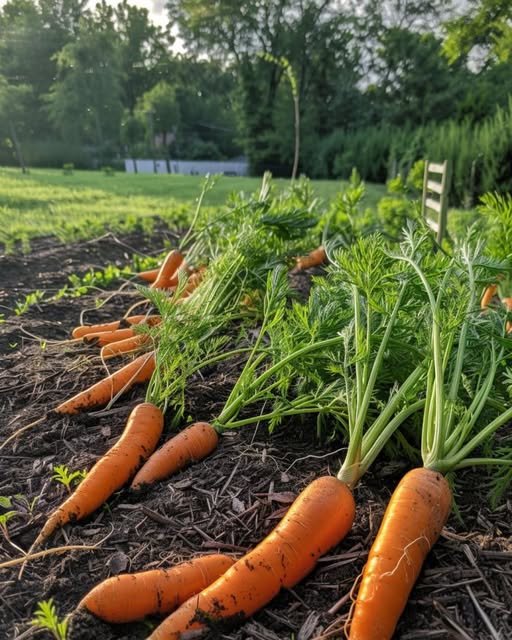Carrots are a sweet and crunchy addition to any meal, from savory stews to healthy snacks. If you’ve ever been disappointed by the lackluster flavor or questionable quality of store-bought carrots, you’re not alone. The good news is that with a little bit of effort and the right tricks, you can grow a bountiful and delicious carrot crop in your own garden.
Whether you’re a seasoned gardener or a green-thumbed rookie, these tips will help you cultivate carrots that are so good you’ll never be tempted by the grocery store bag again.
1. Select the Right Variety
Different carrot varieties thrive in different climates and soil types, so select a variety that’s well-suited to your growing conditions. For example, ‘Nantes’ is known for its sweet flavor and smooth texture, while ‘Chantenay’ is great for heavy or rocky soils.
2. Prepare a Deep, Loose Bed
Carrots love deep, loose, and well-drained soil. To prepare the bed, till to a depth of at least 12 inches and remove any stones or hard clumps that could cause the carrots to become misshapen or stunted. A fluffy soil allows carrots to grow straight and makes harvesting easier.
3. Sow Seeds Carefully
Carrot seeds are tiny, so mix them with sand to help spread them evenly. Then, scatter the mixture over the prepared bed and gently cover with soil. Remember, carrots need close contact with soil to germinate successfully.
4. Keep the Soil Moist
Consistent moisture is vital, especially during germination. Keep the soil moist but not waterlogged. Using a spray bottle or setting a light sprinkler can ensure a delicate, even watering that won’t disturb the seeds.
5. Thin Seedlings Early
Once seedlings emerge, thin them to prevent overcrowding. This might seem harsh, but it’s necessary for carrots to have enough space to grow. Ideally, leave about 2 to 3 inches between each plant.
6. Control Weeds Diligently
Weeds compete with carrots for nutrients and space. Hand-weed your carrot bed carefully to keep these competitors at bay without damaging the carrot roots.
7. Use Mulch Wisely
Mulching helps retain soil moisture and control weeds. Organic mulches, like straw or grass clippings, can provide these benefits while also adding nutrients to the soil as they decompose.
8. Fertilize Moderately
Carrots don’t need a lot of additional fertilizing if planted in rich soil. However, a light application of a balanced fertilizer can help boost growth if your soil is lacking. Avoid high-nitrogen fertilizers, which can promote foliage at the expense of the root.
9. Ward Off Pests Naturally
Companion planting can help deter pests. For instance, planting onions or leeks near your carrots can ward off carrot flies. Also, make sure to rotate your crops yearly to prevent disease build-up in the soil.
10. Harvest at the Right Time
Timing is key when it comes to harvesting. Carrots can be harvested at any size, but for the best taste and texture, wait until they’re just the right size for your variety. If the shoulders of the carrots are peeking out of the soil and have a diameter of about 3/4 of an inch, they’re generally ready to pull.
With these ten tips in your gardening toolkit, you’ll be well on your way to a carrot crop that’s not only plentiful but also superior in flavor and nutrition to anything you could buy at the store. Happy planting and harvesting!



